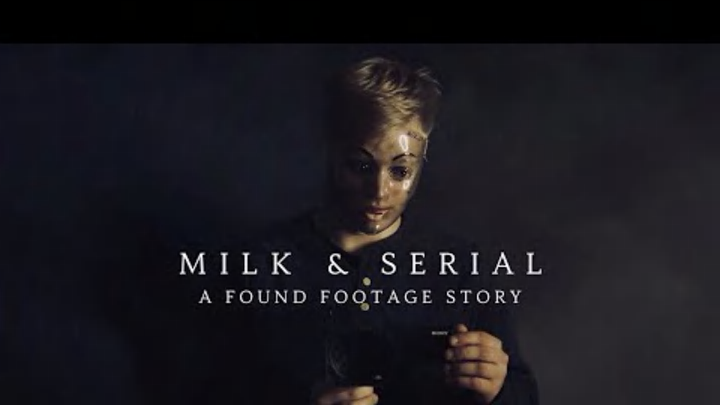Last year, the team known as That’s a Bad Idea garnered plenty of buzz with their short film The Chair. The film has 5.6 million views on YouTube.
Like The Chair, That’s a Bad Idea’s latest viral YouTube horror hit, Milk & Serial, was written and directed by Curry Barker, who also stars in the film. Made for only $800, Milk & Serial is an innovative found-footage film with a disorienting narrative and a series of pranks that go horribly wrong. It also comments on voyeurism in the age of livestreaming.
A birthday bash that doesn’t go as planned
On the surface, Milk & Serial begins with a simple premise. Seven (Cooper Tomlinson) wants to throw a birthday bash for his friend Milk (Barker). Because these guys have their own streaming channel where they upload their pranks, they essentially want to outdo and surprise each other while capturing it on film. This isn’t too dissimilar to what That’s a Bad Idea does regularly. Though they've become known for these horror films, they're also sketch comedy creators. In the film, each prank leads to one escalating crisis after another.
Within the first 20 minutes, Seven and Milk’s plans go horribly wrong, and they find themselves covering up a crime. Not only that, but one of the party's attendees, Lara (Gloria Karel), goes missing. Reasons for this become known in footage shared later. To avoid spoilers and because the film is free on YouTube, I won’t get into the details of what exactly happens. It's better to go into this one blind.

Milk & Serial's effective non-linear narrative
Milk & Serial employs a non-linear narrative. The filming dates and footage are out of order, sometimes by just a few hours. Because of that, we’re treated to little clues and tidbits. It’s not until the last few minutes that it’s fully revealed what all happened before and after the party and what Milk and Seven’s true intentions are.
However, if you pay close attention, the clues are there from the get-go. For example, at one point during the party, one of the characters confesses to harming a cat when younger. This certainly has major serial killer vibes.
While Milk & Serial isn’t the first film to rely on a non-linear narrative structure, it uses it creatively, offering chopped-up and carefully edited footage to keep viewers guessing what exactly will transpire from scene to scene. After all, these are content creators making a film about well, content creation and engaging viewers. The film moves backward and sometimes forward at a break-neck pace. It's a means to keep the viewer tuned in, like other streaming content.
Milk & Serial’s commentary on streaming and voyeurism
Barker’s feature works so well because it has a DIY spirit. You get a sense that he and his friends had a blast making this movie and releasing it themselves. Yet, it’s the commentary on streaming and spectatorship that elevates this film.
While watching this, I continually thought of the Shudder hit Deadstream, which follows a live streamer, played by co-writer and co-director Joseph Winter, who tries to increase likes and subscriptions on his channel by filming himself inside an abandoned haunted house. Both films have a chaotic energy and punk rock spirit to them. However, Milk & Serial’s non-linear narrative makes it somewhat different. It's a puzzle where pieces are slowly given to the viewer.
Though Deadstream comments on the very nature of social media influencers, Milk & Serial addresses voyeurism a bit more. While watching this, you feel like you’re witnessing two live streamers first commit a crime and then cover it up, all while cameras still roll. It gets to the point that it’s hard to discern what’s real and what’s staged for likes and clicks. That’s what so effective about this $800 film.
My only real gripe with Milk & Serial is that the ending feels too abrupt and deflates the energy and build-up that the rest of the movie contains. In a recent interview with Variety, Barker stated there is an 85-minute cut of the film that exists, as opposed to the 62-minute version uploaded to YouTube. At some point, I would like to see that version. He added that he uploaded the shorter version to make it feel quicker, but the conclusion suffers because of that.
Milk & Serial, like The Chair, is another fine example of DIY indie filmmaking. It may serve as Barker’s calling card to eventually land a major project. Or maybe he and his team will continue making movies that they want to make, on their own terms. Regardless, check out Milk & Serial for free on YouTube to see what the hype is all about.
